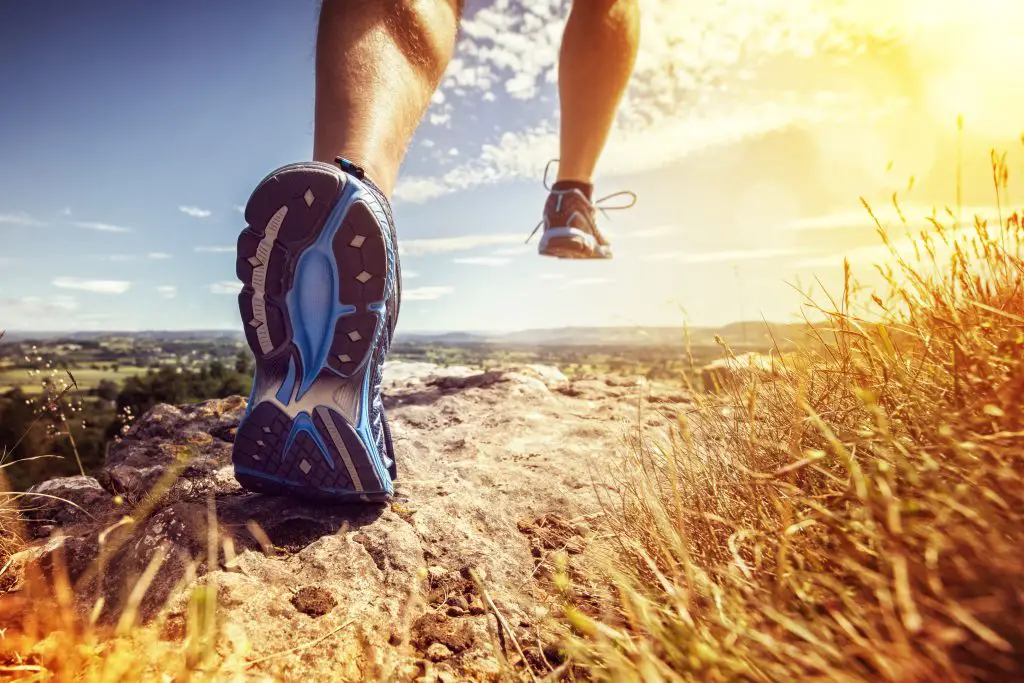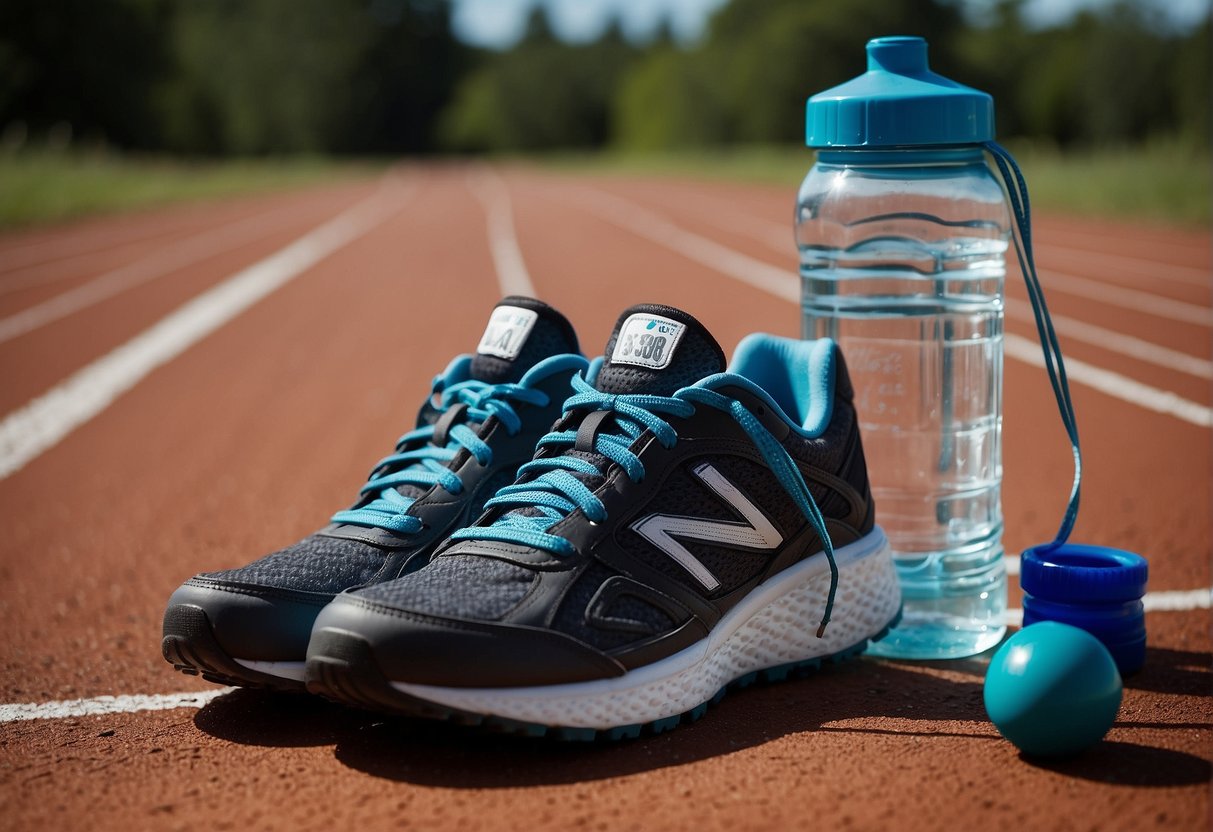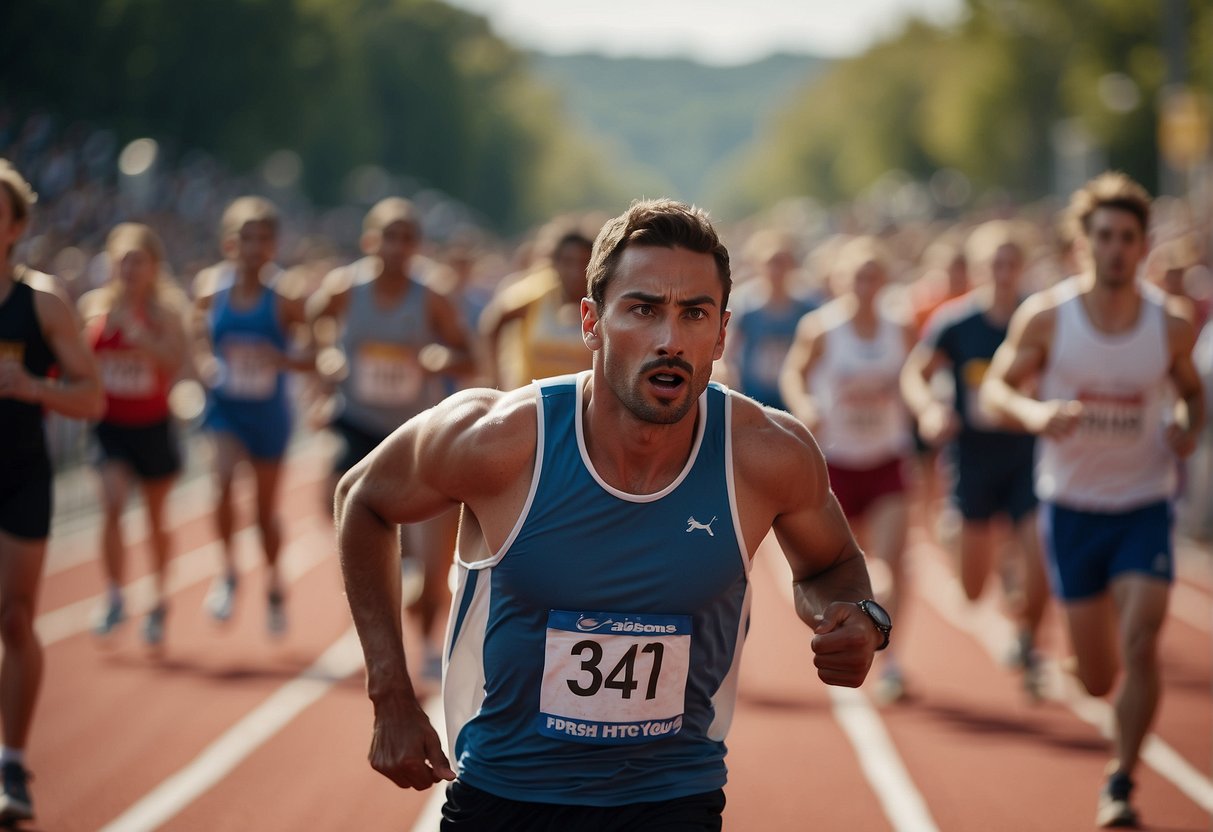Mastering the art of running involves a comprehensive strategy that includes training techniques, dietary habits, and psychological readiness. If you’re wondering how to get better at running, whether you’re a novice tying your sneakers for an inaugural run or an experienced runner aiming to surpass your previous records, recognizing the foundational elements of proficient running is crucial. It’s all about getting the fundamentals of running mechanics right to optimize how your body operates, minimizing injury risks while maximizing your chances for enhanced performance.

Commencing a structured running plan tailored to your current fitness levels and goals can significantly guide your journey to becoming a better runner. In conjunction with a suitable plan, investing in the right running gear can enhance your running experience and provide the support your body needs. Performance isn’t just about the time spent running; it’s also about the recovery afterward. Implementing effective injury prevention strategies and recovery processes is critical. Additionally, proper nutrition and hydration fuel your runs and aid in recovery, while mental training and motivation are the glue that binds your running regimen together, ensuring you remain focused and driven.
Key Takeaways
- Effective running mechanics and a tailored plan are foundations for progress.
- Proper gear, injury prevention, and recovery are crucial for sustained running.
- Nutrition, hydration, and mental strategies are indispensable for overall performance.
Quick Navigation
How to Get Better at Running: Fundamentals of Running Mechanics

Improving your running efficiency involves mastering the correct running form, choosing the right shoes, and employing effective breathing techniques. Focusing on these key elements can enhance your performance and reduce the risk of injury.
Understanding Running Form
Your running form is vital for efficiency and preventing injuries. A proper form consists of maintaining a straight posture with a slight forward lean, engaging your core muscles, and ensuring your feet land beneath your center of gravity. Strive for a controlled and relaxed stride, where your arms swing close to your body, and your hands don’t cross your midline.
- Posture: Stand straight with a slight lean forward
- Stride Length: Keep it short to avoid overstriding
- Stride Rate: Aim for a higher stride rate, which can be more efficient
The Role of Footwear
Selecting suitable shoes can significantly affect your running mechanics. Your shoes should provide adequate support and cushioning and fit comfortably without restricting movement. It’s beneficial to get fitted at a specialty running store to ensure you find the best shoe for your foot type and gait.
- Cushioning: Protects joints from impact
- Support: Helps maintain proper foot alignment
Breathing Techniques
Effective breathing is essential for delivering oxygen to your muscles and can influence your running performance. Practice breathing rhythmically, synchronizing your breaths with your strides for a steady oxygen supply. Deep belly breathing, as opposed to shallow chest breathing, allows for greater oxygen intake and can help you maintain a calm and focused state while running.
- Rhythmic Breathing: Coordinate your breathing with your strides
- Belly Breathing: Breathe deeply from your diaphragm for maximum oxygen flow
How to get Better at Running: Starting a Running Plan

Embarking on a running journey requires a structured approach with clear objectives and a well-thought-out plan. It’s crucial to incorporate efficient warm-up and cool-down routines to safeguard your progress and prevent injuries.
Setting Goals
Before lacing up your shoes, define what you aim to achieve with your running. Goals should be SMART: Specific, Measurable, Achievable, Relevant, and Time-bound. Whether aiming to complete a certain distance or improve your running time, having clear milestones will keep you focused and motivated.
Creating a Training Plan
Your training plan is your roadmap to success, laying out the path from where you are now to where you want to be. It should include a variety of workouts, such as tempo runs to build speed and endurance and a gradual increase in mileage to ensure steady progress. You can find guidance and structured running plans, like those offered in the Nike Run Club app, which caters to different levels of runners.
Warm-Up and Cool-Down Routines
Begin each running session with a warm-up to prepare your body for the activity ahead. This could involve a brisk walk or slow jog for at least five minutes. Post-run, implement a cool-down period with a five-minute walk or slow jog to gradually reduce your heart rate. Follow up with stretching exercises to relax your muscles and enhance your flexibility, reducing the risk of injury and aiding in recovery.
By setting appropriate goals, adhering to a comprehensive training plan, and maintaining proper warm-up and cool-down practices, you’ll be on a sure path to improving your running performance.
How to Get Better at Running: Running Gear Essentials

Before hitting the pavement or trail, equipping yourself with the right running gear is crucial for both your performance and comfort. This section will guide you through selecting the perfect running shoes and apparel catering to your needs.
Choosing the Right Running Shoes
Your running shoes are the cornerstone of your gear. They should provide adequate cushioning to absorb impact and offer stability and motion control tailored to your foot type and running style. Broadly, running shoes fall into neutral, stability, and motion control categories. To ensure a proper fit, visit a specialty store for a gait analysis, which will highlight your unique requirements. Remember that proper shoes can help prevent injuries and improve your running experience.
- Neutral: Best for runners with a normal arch and little to no overpronation.
- Stability: Aimed at runners who have mild to moderate overpronation.
- Motion Control: Designed for runners with severe overpronation or flat feet.
Check out an extensive list of options on Essential Running Gear: Everything Beginners Need to Run or Jog to find the right shoe for you.
Appropriate Running Apparel
Your choice of apparel can make or break your run. Opt for moisture-wicking fabrics to keep sweat away from your body, reducing the risk of chafing and discomfort. Your apparel should also reflect your running conditions. For example, warmer climates require breathable, light clothing, while colder environments require layers.
- Shirts and Tops: Should be light and breathable. Reflective options enhance visibility for night runs.
- Shorts and Pants: Look for flexibility and comfort that prevent constriction of movement.
- Compression Wear: This can improve circulation and reduce muscle fatigue.
Discover how to choose the right clothing on Gear for Runners: What You Need to Get Started – Verywell Fit.
Remember, the right gear will vary considerably depending on individual needs and preferences, but these fundamentals will set a solid foundation for your running journey.
How to Get Better at Running: Improving Performance

To enhance your running performance, focus on three key components: speed through tempo training, endurance via long-distance routines, and overall conditioning with strength and flexibility exercises.
Speed and Tempo Training
Incorporating tempo runs into your routine is crucial for increasing your speed. This type of workout involves running at a challenging but sustainable pace for a set period or distance. For example, if your 10k pace is 50 minutes, aim for a tempo run at a pace where you could hold a conversation but still feel pushed, say for 20 minutes. This kind of training adapts your body to sustain faster speeds without fatigue.
Endurance and Long Distance
To build endurance, gradually increase your weekly mileage and incorporate longer runs at a comfortable pace. It’s not about speed; it’s about increasing your muscles’ time under stress and improving your aerobic capacity. This consistent training builds stamina and your body’s ability to use oxygen, thereby enhancing long-distance performance efficiently.
Strength and Flexibility Exercises
Beyond running, strength training is vital for improving muscle condition and joint stability. Exercises such as squats and lunges target key running muscles, helping to improve power and reduce injury risk. Russian Twists and planks, for example, strengthen the core, which can improve posture and running efficiency. Flexibility is equally important; stretching or incorporating yoga into your routine ensures muscles are less prone to injuries and are capable of a full range of motion. This combined approach to training contributes to a more balanced and resilient body for better running performance.
How to Get Better at Running: Injury Prevention and Recovery

To enhance your running performance and longevity in the sport, it’s essential to understand injury prevention and effectively apply recovery techniques. This encompasses recognizing common injuries, utilizing recovery tools like foam rollers, and incorporating cross-training into your routine to prevent fatigue and maintain optimal form.
Understanding Common Injuries
Running-related injuries often stem from overuse, poor form, or inadequate footwear. Common issues include shin splints, runner’s knee, and plantar fasciitis. To prevent these, wear the proper footwear supporting your foot type and running style. Integrating stretching before and after your runs is beneficial to maintain flexibility and warm up your muscles.
Recovery Techniques
After an intense run, your muscles need time to repair. Techniques such as using a foam roller can assist in muscle recovery by increasing blood flow and reducing tension. Embedding a cool-down stretch routine post-run is also pivotal for easing muscle soreness and enhancing flexibility. Structured rest is imperative, and don’t neglect the power of adequate sleep for optimal recovery.
Cross-Training Benefits
Incorporating cross-training activities like swimming, cycling, or strength training can provide numerous benefits, including reduced injury risk and improved overall fitness. These activities help balance your musculature, correcting imbalances and improving your running form, consequently minimizing the likelihood of injury. Cross-training also offers a mental break from running, helping to prevent burnout and fatigue.
How to Get Better at Running: Nutrition and Hydration

Optimizing your diet and maintaining proper hydration are crucial in boosting your running performance. A balanced intake of nutrients and consistent water consumption can significantly impact endurance and recovery.
Balanced Diet and Running
Your running regimen demands a balanced diet rich in carbohydrates, moderate in proteins, and contains adequate fats. Aim to ingest:
- Carbohydrates: The primary energy source for runners, should account for about 60-70% of your total calorie intake. Opt for complex carbs, like whole grains, for sustained energy.
- Proteins: Essential for muscle repair and recovery post-run. Include 15-20% of your daily calorie intake as proteins from lean meats, beans, and dairy.
Ensure you also include various fruits and vegetables to ensure you’re getting a wide range of nutrients. Monitor your calorie intake to maintain energy balance; you’ll need more on active days.
For specific guidance, nutritional strategies like consuming five to seven grams of carbohydrates per kilogram of body weight if you run about one hour daily can be beneficial.
Importance of Staying Hydrated
Hydration is of utmost importance; it aids in temperature regulation and joint lubrication and helps transport nutrients. Follow these hydration practices:
- Drink water consistently throughout the day, not just during runs.
- The color of your urine can indicate your hydration level; aim for a light yellow. Beware that certain foods and medications might alter urine color.
Before a run, hydrate sufficiently to create a ‘reservoir’ of water in your body. During longer runs, supplement with drinks containing electrolytes to replenish what is lost through sweat.
Remember that the exact hydration needs can vary based on individual sweat rates and environmental conditions. It’s about maintaining the balance and adjusting as needed to stay hydrated and energized for optimal running performance.
How to Get Better at Running: Mental Training and Motivation

Developing mental fortitude is as crucial as physical preparation in running. Your ability to maintain focus, set realistic goals, and keep a consistent training routine will determine your success. Mental stamina and motivation are the bedrock of a strong running performance; they allow you to manage pressure and push through challenging moments.
Mental Stamina Strategies
Self-Talk:
- Inject positivity: Replace negative thoughts with positive affirmations. Tell yourself, “I am strong; I can do this,” when fatigue sets in.
Visualization:
- Imagine success: Regularly picture yourself crossing the finish line or conquering a tough hill.
Goal Setting:
- SMART Goals: Set Specific, Measurable, Achievable, Relevant, and Time-bound goals to guide your training.
Breathing Techniques:
- Practice rhythmic breathing to create a sense of calm and maintain control during your runs.
Staying Motivated
Find Your Why:
- Clarify your motivation: Remember the reasons you run, whether it’s for health, competition, or relaxation.
Consistency:
- Set a schedule: Regular running builds resilience, so plan your runs and stick to the routine.
Accountability:
- Partner up: Running with a friend can help maintain motivation and add enjoyment to your training.
Track Progress:
- Celebrate milestones: Recognize your improvements, no matter how small, to boost morale and drive.
Running in Different Conditions

Running effectively in varying conditions requires specific strategies. Understanding these factors is crucial to your training progress, whether adapting to different weather scenarios or the challenges of high-altitude environments.
Adapting to Weather Variations
Your body’s response to heat, cold, or humidity demands that you adapt your running routine to stay safe and perform well. Here’s how you can adjust:
- Hot Weather: Hydration is paramount. Drink water regularly before, during, and after your run. Wear lightweight, breathable clothing and consider running during cooler parts of the day, such as early morning or late evening.
- Cold Weather: Layer your clothing with moisture-wicking fabrics closest to your skin and an insulating layer. Protect your extremities with gloves and hats, as they are most susceptible to the cold.
- Humid Conditions: Humidity can cause excessive sweating and dehydration despite the temperature. Run slower and drink more fluids than usual to compensate for the increased sweat loss.
Altitude Training and Its Effects
Altitude training has well-documented benefits and challenges due to lower oxygen levels at higher elevations.
- Oxygen Availability: At higher altitudes, your body has to work harder to get the oxygen it needs, which can improve your endurance over time.
- Adaptation Period: Give yourself two to three weeks to acclimatize. Start with shorter, less intense runs and gradually increase both as you adapt.
Remember, altitude training isn’t for everyone, and the benefits vary from runner to runner. If you decide to train at elevation, monitor your body’s reactions closely.
Advanced Running Techniques

To excel in running, you must adopt strategies beyond basic training principles. Advanced techniques are designed to enhance your performance, whether for a 5k or a full marathon and ensure every step you take is calculated to improve speed and endurance.
Race-Specific Training
Race-specific training tailors your workout to the particular demands of the race you’re preparing for. For a 5k race, this might mean focusing on tempo runs that sustain a faster pace than your typical long run, directly improving your ability to hold a high speed over the race distance. When training for a full marathon, on the other hand, it’s essential to incorporate long runs that condition your body to the rigors of endurance while also mixing in sessions at your planned marathon pace to get your body accustomed to the specific intensity.
- 5k Training: Include weekly tempo runs at a hard but sustainable pace.
- Marathon Training: Blend long runs with marathon pace sessions to build endurance and speed.
Incorporating High-Intensity Intervals
High-intensity interval training (HIIT) is a powerful tool for runners aiming to improve their speed. This involves short bursts of intense effort followed by a recovery period. In speed work, such as intervals on a track, you might run 400-meter repeats at a pace faster than your usual race speed, followed by a brief period of jogging or walking to recover. This training enhances aerobic capacity and increases lactate threshold, allowing you to maintain a faster pace for longer during a race.
- Interval Example: 8 x 400 meters at 5k race pace with 90 seconds of jogging recovery.
- Benefits: Builds speed and power, improves running economy, and increases lactate threshold.
How to Get Better at Running: Conclusion
Mastering how to get better at running is a multifaceted journey that demands dedication to training, nutrition, gear selection, and mental fortitude. By focusing on efficient running mechanics, embracing a structured training plan, and prioritizing recovery, you can elevate your performance to new heights. Remember, the right gear, proper nutrition, hydration, and mental strategies play pivotal roles in your running success. Whether you’re a beginner or an experienced runner, integrating these principles will enhance your running efficiency and ensure a fulfilling and injury-free running experience. Embrace the journey, set realistic goals, and stay motivated—your path to becoming a better runner is within reach.
